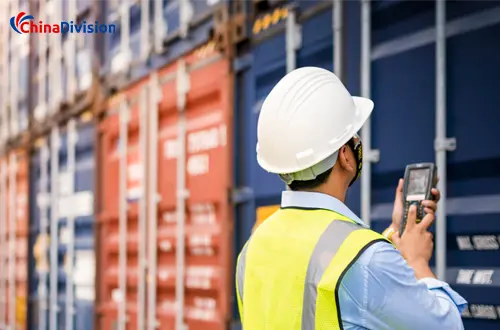U.s. Customs Has Stepped Up Inspections, Focusing on What They Will Check
Table of Contents
In international trade, customs inspections aim to ensure that all imported and exported goods comply with national laws, regulations and customs regulations. Critical to maintaining national security, protecting consumer rights, and ensuring tax compliance. When it comes to customs inspection, as a transportation service provider, how does chinadivision ensure that the goods pass smoothly?
What is a customs inspection?
Customs inspection refers to the customs inspection of imported or exported containers to ensure that the goods comply with relevant laws, regulations and customs requirements. Customs inspection times and procedures vary between countries, regions and types of goods.
What are the key contents of customs inspection?
Customs code
Customs codes are key to determining tax rates and regulatory conditions. The customs code for customs declaration or clearance will affect the tax rate. Incorrect customs codes may cause the goods to be inspected or even not released. It is crucial to ensure that the customs code is accurately declared.
Any attempt to reduce taxes by misleading customs codes will increase the risk of inspection and may cause delays in transportation.
Product name, model, brand and ingredients
The declaration of cargo information such as product name, model, brand, ingredients, specifications, etc. must be consistent with the actual situation. Any inconsistency may trigger questioning and inspection by customs.
If the product names are inconsistent, the inspection may fail. If the original product name shipped has a higher tax rate and a similar product name is changed, the risk of customs clearance inspection will also increase.

Especially when shipped from the factory, there may be multiple models of the same product. For multi-model products, the declared model number must match the model identification on the goods. Wrong model may result in inability to clear customs. The declared model must be consistent with the box label, product packaging, instructions, etc.
The brand status should be accurately stated when declaring. Self-owned brands need to provide relevant certificates, while non-self-owned brands need to provide a brand authorization letter.
Product ingredient declarations must be accurate and accurate. For chemical products etc., accurate declaration of ingredients is crucial to ensure compliance with quality and safety standards. For example, the composition of plastics must be clearly described.
Specifications, weight and quantity and origin
The declared product specifications must be consistent with the actual shipped specifications, and the weight and number of pieces must be consistent with those declared, otherwise customs clearance will not be possible.
The actual weight of the goods must be consistent with the declared weight, and the origin declared for export must be consistent with the actual weight. Any significant difference may attract customs attention. Even the number of items in the box must be consistent with the customs declaration form. (Latest Adjustments to Customs Declaration Form Filling Specifications)
Hidden goods
Check whether there are under-packaged or under-reported products at factory exports, as well as whether there are smuggled sensitive goods, dangerous goods, contraband, etc. Also includes samples, personal items or contraband.
Mark
That is, the outer box label. The brand, product name, model and other information on the outer box label must be consistent with what is declared.
Value
The declared value cannot deviate too much. If it is too low or too high, it will increase the risk of inspection. Transportation service providers should ensure that the declaration of cargo value is reasonable and accurate to avoid unnecessary inspections and delays.
Problems that may arise from increased customs inspection rates
- Logistics delays: Enhanced inspections may extend customs clearance time and affect the timely delivery of goods.
- Additional fees: Illegal goods may face detention, fines and other fees, which will increase the financial burden of the importer.
- Supply chain disruption: Logistics delays and additional costs may affect the stability of the supply chain, thereby affecting the company's production and delivery.
How to reduce the risk of product deductions due to inspection:
- Advance transportation
By transporting to overseas warehouses in advance, we can ensure timeliness while reducing logistics costs. If time is difficult to control, you can choose to transport the goods to overseas warehouses in advance to reduce logistics costs.
- Compliance certification
Compliant products are more likely to pass customs inspection smoothly. Ensure that products comply with the regulations and standards of the target market, such as FDA and FCC certification in the United States.
- Compliance declaration
Follow customs requirements, provide accurate and clear declaration information, and avoid concealment or false declaration, which may lead to inspection, confiscation and fines.
- Reasonable packaging
Use appropriate packaging materials and methods to protect the safety of goods and reduce the probability of inspection.
- Accurate customs declaration
Ensure that all customs clearance documents are correct, including invoices, packing lists, certificates of origin, etc. Avoid incorrect or missing documents, which may arouse customs suspicion and lead to inspections.
Through these measures, we can effectively reduce the inspection and deduction rate, ensure that customers' goods can pass through customs safely and efficiently, and achieve smooth delivery.
In order to ensure smooth customs clearance of goods, it is recommended to cooperate with a professional third-party logistics service provider. Choosing a professional logistics service provider, such as ChinaDivision, can significantly reduce the risk of customs inspection and ensure that your goods pass customs inspection smoothly and efficiently.





